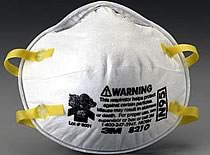Health care for everyone costs half as much
The facts of the cost control debate are crystal clear: Countries with universal, accessible health care (note that I didn’t say “health insurance”) have per capita costs that are about half those of the US. ( e.g. Klein, Krugman, Somerby also has links to original data.) Should I repeat that? Our system of health care for people who pay costs twice as much as health care for everybody.
It’s that simple. The data are out there. So why are they invisible? Why doesn’t Obama point that out in his many TV appearances? He talks about cost control, but makes it seem it’s so complicated we need a 1000-page bill for it and over four years to implement. Why isn’t the simple fact a small enough sound bite for the chattering classes?
I think we’re up against more than interests vested in obfuscation. All the vested interests in the world aren’t enough to explain why people are so willing to believe it when the facts are so blazingly simple.
I think we’re up against a fundamental sense, a lizard brain thing, that says you can’t possibly get something unless someone else loses it. Win-win is counterintuitive. Lose-lose is even more counterintuitive. If my money is not being spent on those no-goods, then I must have more left at the end, right? And when that falls flat, when the whole damn economy is suffering because we refuse to have universal health care, then the problem is, obviously!, that too much money is still somehow being spent on no-goods.
The facts are eclipsed by the inability to understand them.
That has a practical application. It means that in this health reform debate we’re having nationally, the point to hammer home is not only that compassion and cost control go together, as Krugman has pointed out. The corollary is even more important. Lack of compassion does not lead to savings. Lack of compassion leads to trillions in wasted money.
The ads we should be running should show fiscal “conservatives” clutching a single dollar bill while setting fire to a sea of burning hundreds.
health care, reform, cost control, zero sum
 Print This Post
Print This Post



